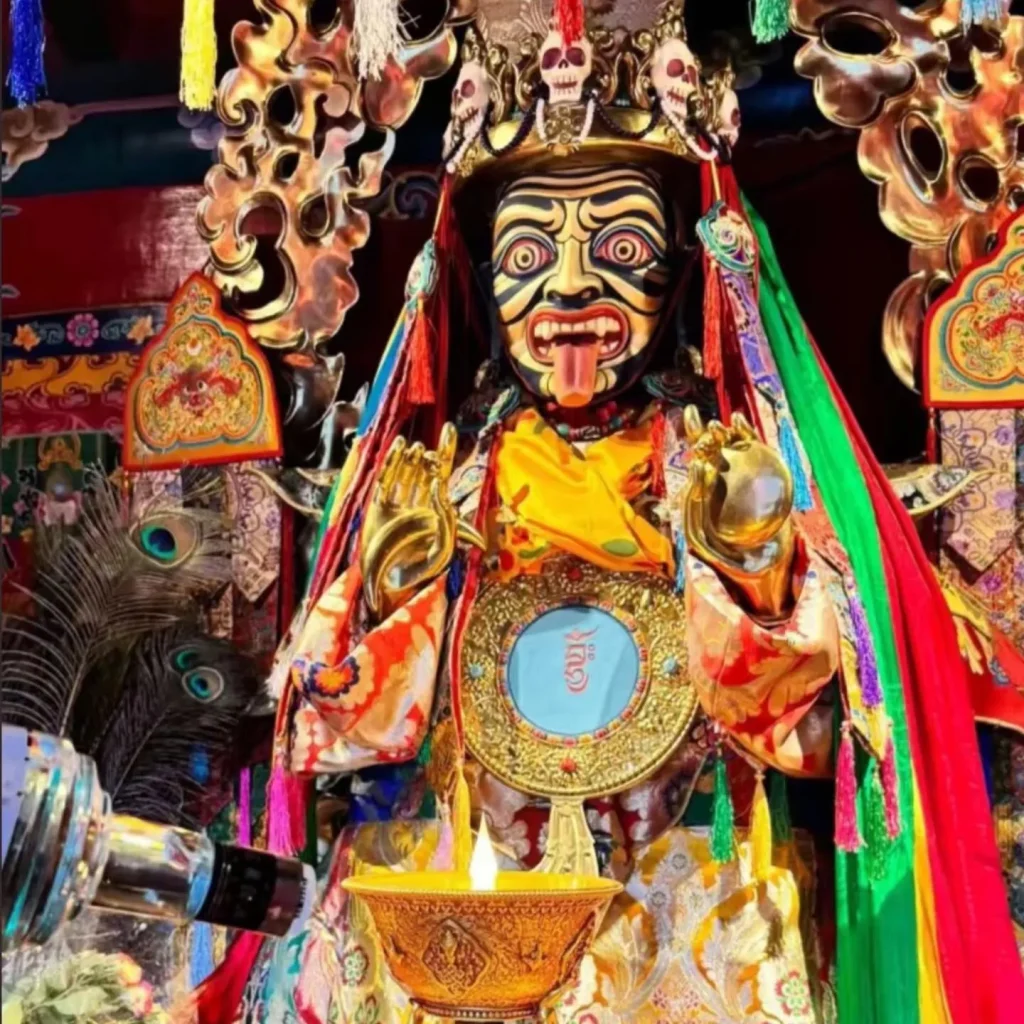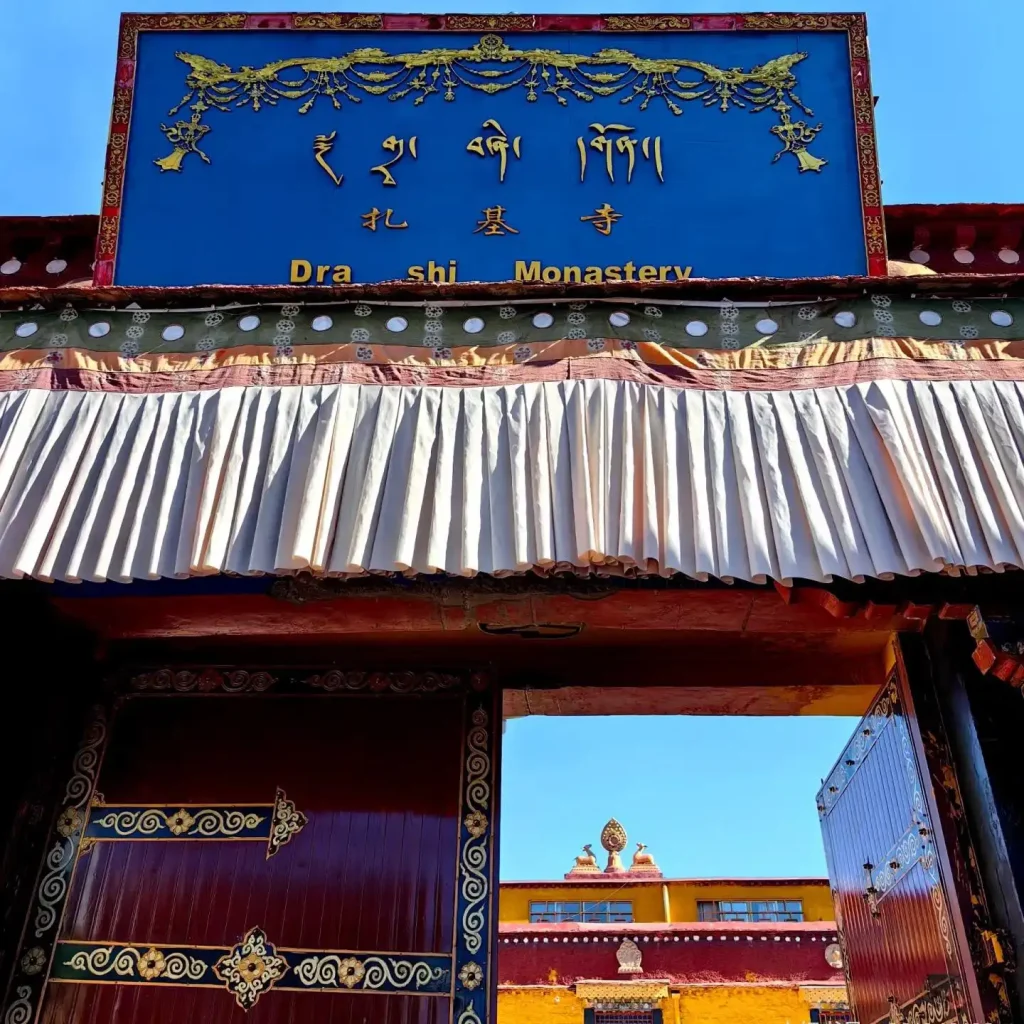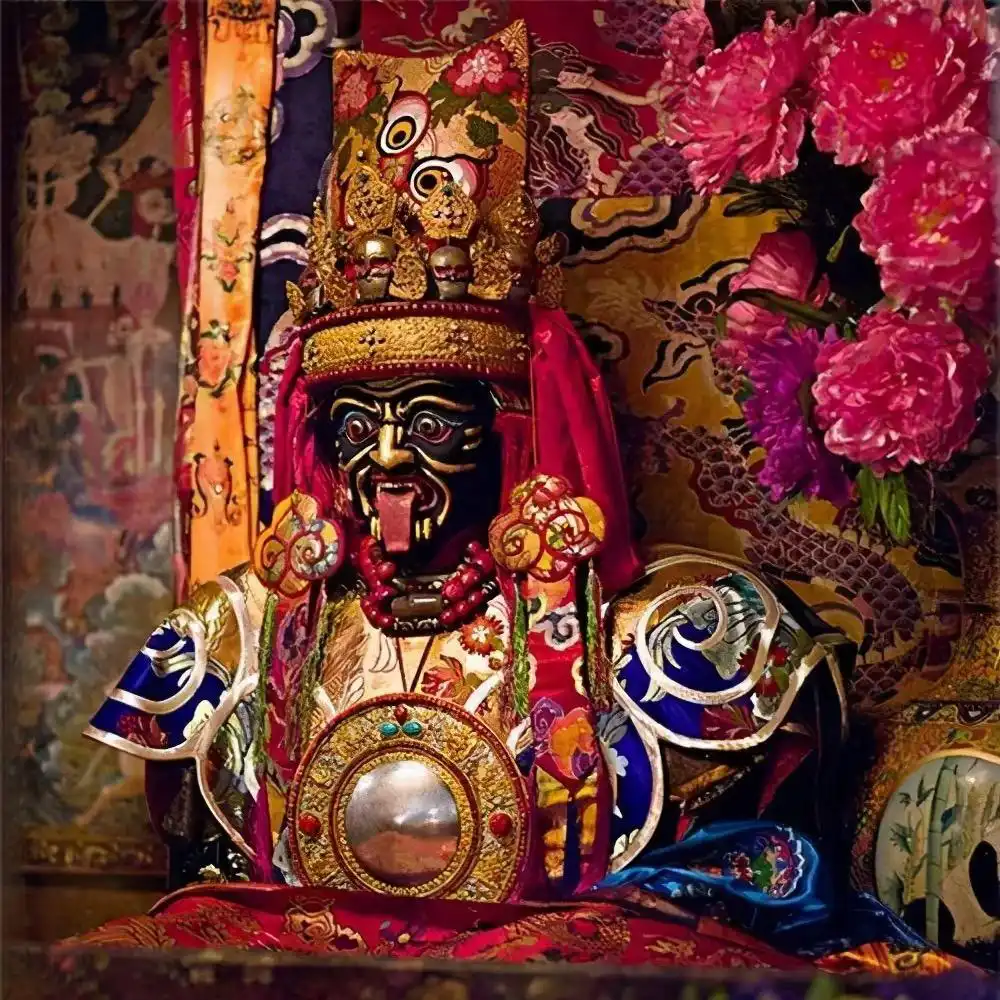In the mystical landscape of Tibetan Buddhism, Zakiram
(also known as Palden Lhamo or the “Glorious Goddess”) stands as a revered deity symbolizing prosperity, protection, and good fortune. Her legend, deeply intertwined with Tibet’s spiritual heritage, continues to inspire devotees worldwide. This article explores her captivating mythology, symbolic significance, the sacred Zashi Lhamo Temple dedicated to her, and the benefits of wearing her talismanic adornments.
The Legend of Zakiram
Zakiram’s origin story is both intriguing and paradoxical. According to folklore, she was once a beautiful, benevolent goddess from a distant land who traveled to Tibet to spread compassion. However, her journey took a dark turn when she encountered jealousy and suspicion from local deities. To protect herself and her mission, she vowed to transform into a fierce protector.
One popular tale describes her marriage to a cruel king. Horrified by his tyranny, she attempted to save her people by poisoning him, only to face divine retribution. In her penance, she pledged to guard the Buddhist dharma, adopting a wrathful appearance: a dark blue or black complexion, flaming hair, and a protruding tongue meant to swallow negative energies. Her mount, a mule crossing a sea of blood, symbolizes her triumph over suffering. Despite her fearsome visage, devotees believe her heart remains compassionate, channeling her power to grant wealth and blessings to those who honor her.

Symbolism of Zakiram
Zakiram embodies dualities—fierceness and benevolence, destruction and creation. Her primary symbolism includes:
- Wealth and Abundance: As a wealth deity, she is believed to remove financial obstacles and attract opportunities. Many business owners and traders pray to her for success.
- Protection: Her wrathful form wards off evil spirits, misfortune, and negative karma.
- Motherly Compassion: Despite her terrifying appearance, she is considered a nurturing figure, especially for women and children.
- Karma and Justice: She is said to punish the wicked and reward the virtuous, aligning with Buddhist principles of cause and effect.
Her iconography—a skull cup filled with blood (representing cycles of life), a trident (subduing ignorance), and a bag of treasures—reflects her role as a guardian of both material and spiritual wealth.
The Sacred Zashi Lhamo Temple
Nestled in Lhasa, Tibet, the Zashi Lhamo Temple is the epicenter of her worship. Built in the 17th century, this modest yet spiritually charged monastery draws thousands of pilgrims annually, particularly on Wednesdays, considered auspicious for seeking her blessings.
Devotees follow unique rituals here:
- Offerings of white liquor (symbolizing purity), khata scarves (white silk for goodwill), and incense are presented to the goddess.
- The temple’s inner sanctum houses a striking statue of Zakiram, adorned with jewels and silk. Visitors touch their foreheads to the statue, hoping to absorb her divine energy.
- A sacred tree in the courtyard is draped with prayer flags, each carrying hopes for prosperity and health.
The temple’s ambiance—a blend of smoky incense, murmured prayers, and the clinking of coins—creates an unforgettable spiritual experience.

The Power of Zakiram Talismans
Wearing Zakiram-themed jewelry or amulets (such as pendants, bracelets, or prayer beads) is a popular practice among her followers. These talismans are believed to:
- Attract Wealth: Carrying her image serves as a reminder to cultivate generosity and ethical conduct, which Buddhists consider key to generating prosperity.
- Shield from Negativity: The amulets act as a spiritual armor against envy, accidents, and harmful influences.
- Enhance Spiritual Focus: Meditating on her form fosters inner strength and clarity, aligning the wearer with her protective energy.
- Promote Luck: Many believe her blessings open doors to serendipitous opportunities in career, love, and health.
It’s customary to have such items blessed by monks at the Zashi Lhamo Temple or other sacred sites to activate their potency.
Claim Your Zakiram Tangka [Here]

Conclusion
Zakiram’s enduring legacy lies in her ability to bridge the mundane and the divine. Whether through visiting her temple, praying to her statue, or wearing her symbols, devotees seek not only material gains but also the courage to overcome life’s challenges. In a world fraught with uncertainty, her story reminds us that even in darkness, there exists a path to light, abundance, and resilience—guided by the fierce compassion of Tibet’s beloved goddess of fortune.
Om Tare Tuttare Ture Soha! (A mantra often chanted to invoke blessings of wealth and protection.)
 FateKarma
FateKarma












